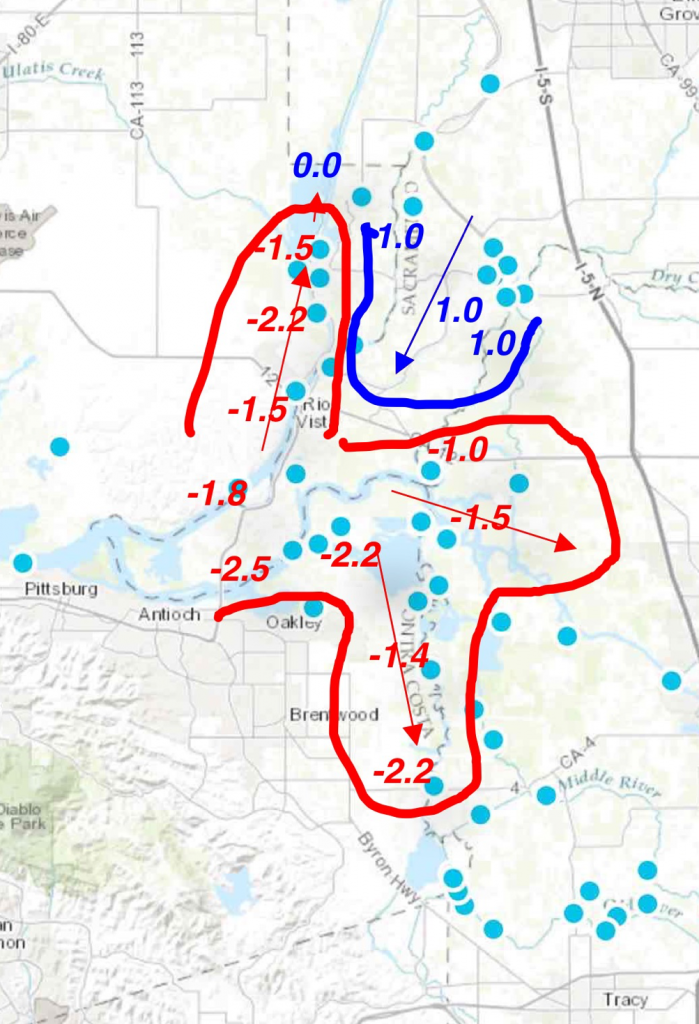The conflict continues between the Smelt Working Group (SWG) and the designated protector of the Delta smelt, the US Fish and Wildlife Service (FWS), over the amount of Delta exports allowed under existing Delta conditions. The SWG recommends exports of no more than 2000 cfs, while the FWS continues to allow exports of 5000-6000 cfs (about half capacity), contrary to the rules for Delta exports in its own smelt biological opinion. The SWG notes that adult smelt continue to be captured in trawls in the central Delta (in surprising numbers), where smelt are at high risk of being drawn to the south Delta pumping plants or of eventually spawning in the central Delta where their offspring will be vulnerable to the export pumps. The FWS is committed to allowing moderate exports as long as no adults are captured at the pumping plants’ fish salvage facilities (which would indicate it is too late to do anything other than to shut down the pumps). The National Marine Fisheries Service limits exports to the present 5000-6000 cfs level as of January 1, consistent with rules in its own biological opinion to protect juvenile salmon migrating down the Sacramento River.
Despite high Sacramento River inflows into the Delta of 30,000 to 50,000 cfs in the past two weeks, the smelt move from the Bay into the Delta by surfing the tides – that is, by moving upstream on incoming tides. Flood tide velocities shown in Figure 1 indicate the adult smelt can readily “surf” into the Delta until they come up against the strong flows of the Sacramento River and its inflow channels that overwhelm the tidal flows. In the south Delta, where limited flow has been coming down the San Joaquin River, export pumping plants accentuate the negative flood tide velocities and reduce ebb tide velocities. This further increases the risk that adult smelt will be drawn to the south Delta. Only time will tell if this risky FWS strategy protects the endangered Delta smelt during this potential comeback year.

Figure 1. Flood tide channel current velocities in feet/second in early January 2017. Arrows depict current direction on flood tides. Sacramento River net downstream flow was 30,000-50,000 cfs, which overwhelmed the flood tide. Light blue dots are flow gaging stations. Basemap source with gaging stations is DWR/CDEC.
